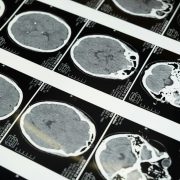LATE is now listed alongside the top three disorders that cause dementia in older individuals.
iStock by Getty Images
Health
Examining a lesser-known dementia driver
It’s called LATE, but what exactly is it and why haven’t we heard of it before?
If dementia is a general term that means thinking and memory has deteriorated to the point that it interferes with day-to-day function, what are the top three disorders that cause dementia in older individuals?
Did you think of Alzheimer’s disease? Good! Alzheimer’s is the most common cause of dementia. Did you also think of vascular dementia or strokes? Excellent! Vascular dementia is the second most common cause. What about the third?
It’s not Lewy body dementia, although Lewy body dementia (encompassing both dementia with Lewy bodies and Parkinson’s disease dementia) is the fourth most common cause. Individuals with this disorder often have features of Parkinson’s disease, visual hallucinations of people and animals, fluctuations in attention and alertness, and they may act out their dreams in bed.
It’s not frontotemporal dementia. Individuals with this disorder are often in their 60s or younger. They generally have problems with behavior or language.
So what’s the answer? It’s LATE, which stands for limbic-predominant age-related TDP-43 encephalopathy.
What’s LATE?
In LATE, a protein called TDP-43 (which stands for transactive response DNA binding protein of 43 kDa) accumulates in brain cells. Once it accumulates, it injures and ultimately destroys the cells.
LATE generally damages many of the same areas affected by Alzheimer’s disease. These regions include
the amygdala, involved in emotional regulation
the hippocampus, involved in learning and memory
the temporal lobe, involved in words and their meanings
portions of the frontal lobes, involved with keeping information in mind and manipulating it.
What are the symptoms of LATE?
Because LATE affects many of the same brain regions as Alzheimer’s disease, it often presents with similar symptoms, including
memory loss (impairment in episodic memory)
trouble finding and understanding words (impairment in semantic memory)
trouble keeping information in mind (impairment in working memory).
How common is LATE?
More like this
Health
Excessive napping and Alzheimer’s linked in study
Health
Exploring why some remain sharp even as decades roll by
Health
Grandma’s workouts may have made you healthier
By itself, LATE is estimated to cause about 15 percent to 20 percent of all dementias. Many people with dementia also have LATE pathology in addition to one or more other pathologies in their brain. For example, an individual may have the plaques and tangles of Alzheimer’s pathology, plus LATE pathology, plus ministrokes (vascular pathology). It turns out that about 40 percent of people with dementia have at least some LATE pathology in their brain. All of this means that LATE is, indeed, very common.
This is an excerpt from an article that appears on the Harvard Health Publishing website.
To read the full story
Andrew E. Budson is chief of cognitive & behavioral neurology at the Veterans Affairs Boston Healthcare System, lecturer in neurology at Harvard Medical School, and chair of the Science of Learning Innovation Group at the Harvard Medical School Academy.




